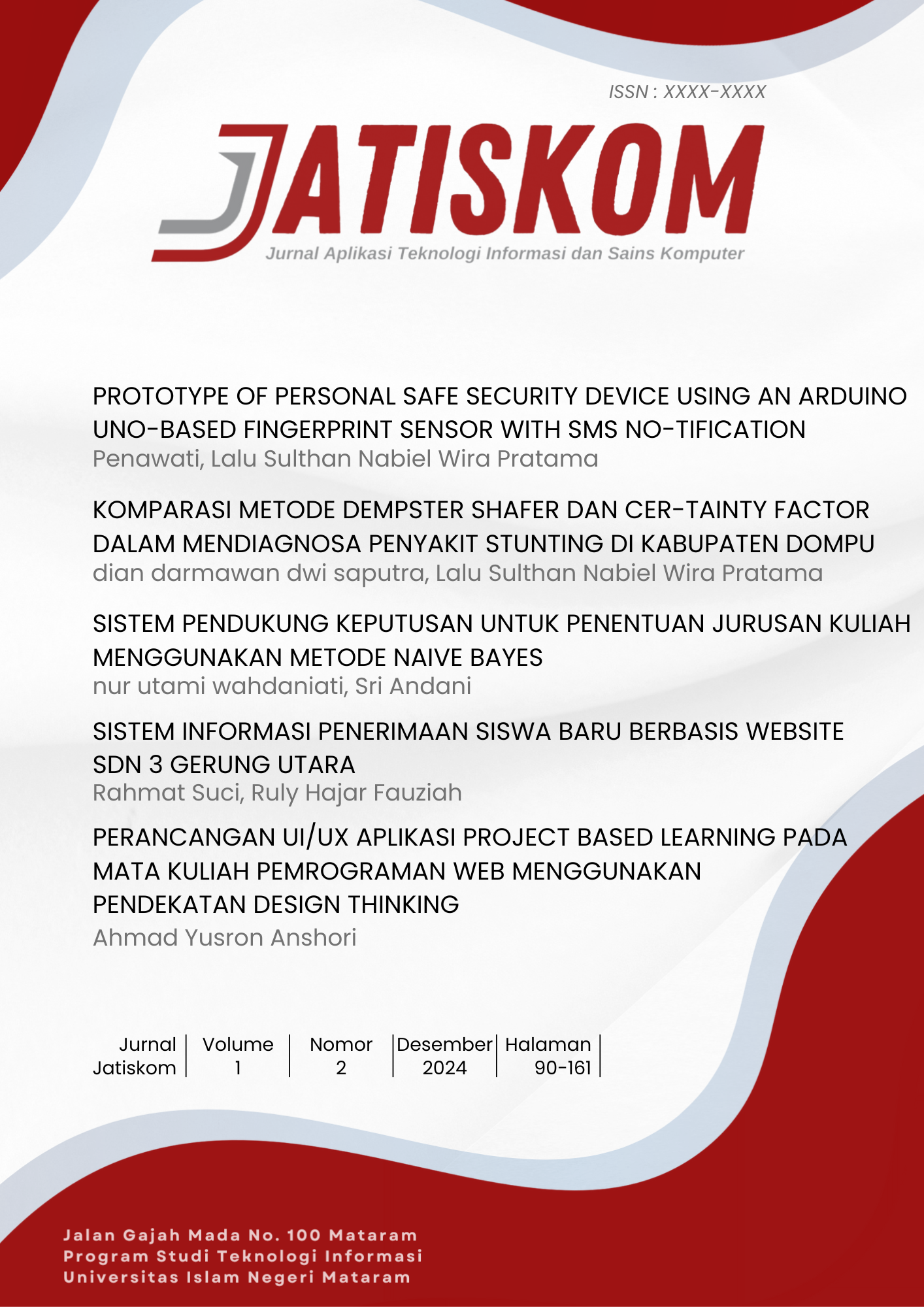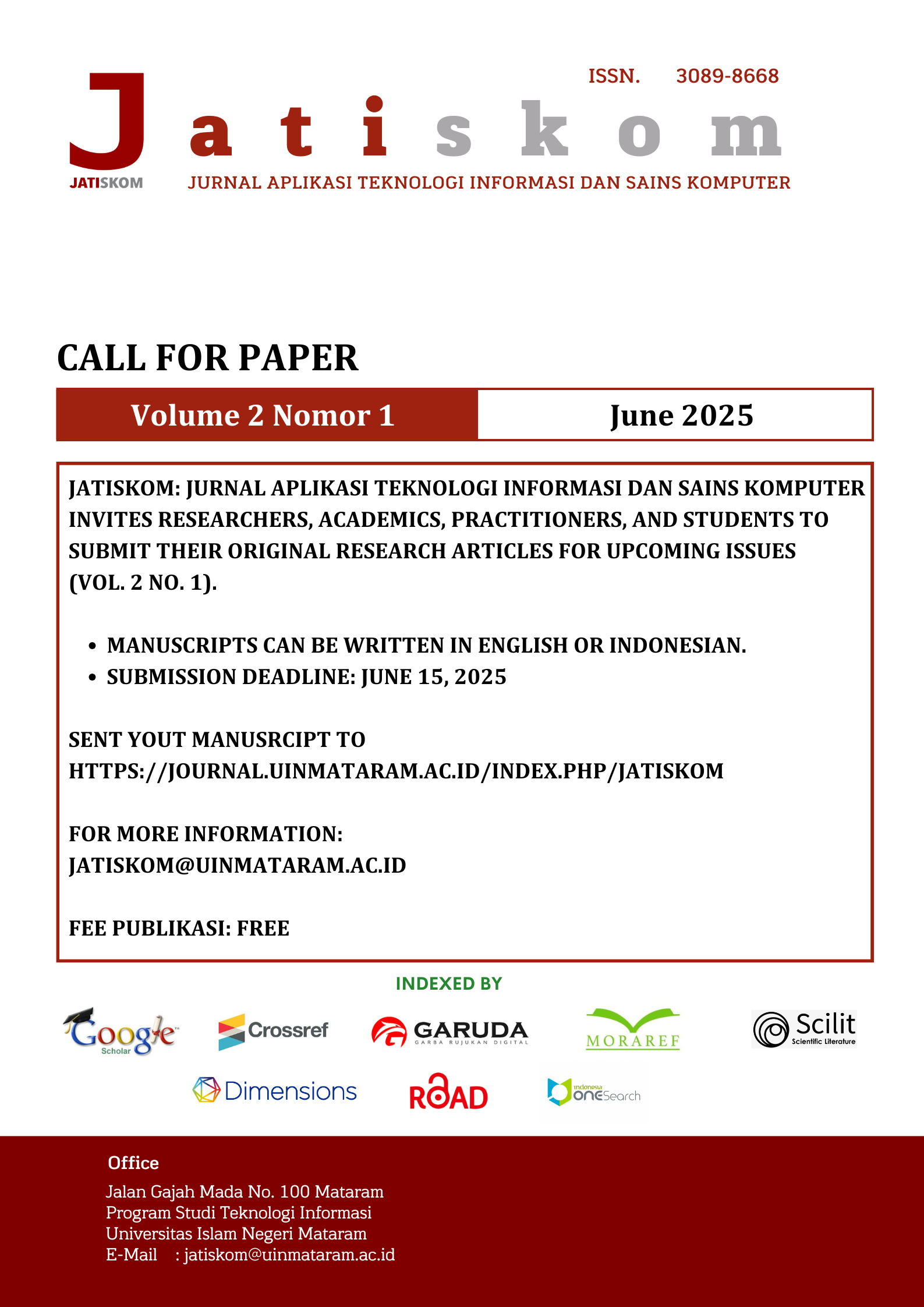KOMPARASI METODE DEMPSTER SHAFER DAN CER-TAINTY FACTOR DALAM MENDIAGNOSA PENYAKIT STUNTING DI KABUPATEN DOMPU
DOI:
https://doi.org/10.20414/jatiskom.v1i2.12659Keywords:
Stunting, Expert system, Malnutrition, Dempster shafer, Certainty factorAbstract
Stunting remains a public health issue in Indonesia. Stunting in toddlers can lead to decreased productivity and quality of Indonesia's human resources in the future. Stunting is a chronic malnutrition problem caused by inadequate nutritional intake over a prolonged period due to improper feeding that does not meet nutritional needs. One solution proposed to help diagnose stunting problems, especially those caused by poor nutrition or malnutrition, is through the use of expert systems. An expert system is a program designed to make decisions, similar to those made by one or more experts, where these decisions can be recommendations or solutions based on the knowledge possessed by the experts. An expert system can also be seen as a duplicate of an expert, as the knowledge is stored in a database to aid in problem-solving. The stored data can include symptoms experienced by the patient, allowing the program to infer the type of illness the patient is suffering from. One method used in expert systems is Dempster Shafer. This research will apply a method to help identify stunting caused by malnutrition in toddlers using the Dempster Shafer Method and the Certainty Factor Method. The system designed and built in this study is intended to assist or provide information to users in analyzing stunting from the perspective of poor nutrition and growth disorders experienced by toddlers. The analysis of growth disorders will use the Dempster Shafer and Certainty Factor methods, which will produce uncertainty values in assessing the potential symptoms affecting the level of malnutrition risk in each toddler. The input actors provide data on toddlers, including BMI (Body Mass Index) based on body length/height and age, as well as gender. The output will indicate the level of malnutrition suffered and the growth disorders resulting from malnutrition in stunted patients. The expected benefit of creating this application is to implement the Dempster Shafer and Certainty Factor methods to analyze toddler malnutrition based on risk levels and growth disorders through experienced symptoms. This will help and provide information to users in preventing growth disturbances in toddlers, which is one of the main causes of stunting. Based on calculations using the Certainty Factor method, the final results differ from those obtained using the Dempster Shafer method, even with the same symptoms selected. The chosen symptoms are: 1. Lack of energy and appearing unenthusiastic and lethargic 2. Weight loss 3. Difficulty concentrating 4. Respiratory tract infections. The final results show diagnostic certainty values of (underweight = 0.4), (Marasmus = 0.232), (Kwashiorkor = 0.2), and (Stunting = 0.144). Therefore, based on the highest certainty factor value, the patient's condition is diagnosed as underweight with a certainty factor of 0.4 or 40%. Based on the two methods and the same symptoms, it can be concluded that the Dempster Shafer method has greater accuracy compared to the Certainty Factor method. The validation result from the questionnaire gives a validation score of 86.5 (Strongly Agree).



